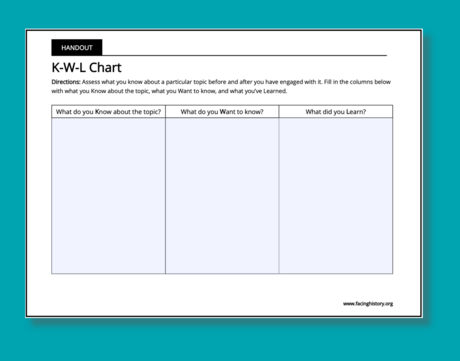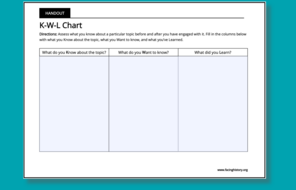
K-W-L Charts
At a Glance
Subject
- English & Language Arts
- History
- Social Studies
Grade
6–12Overview
What Is a K-W-L Chart?
K-W-L charts are graphic organizers that help students organize information before, during, and after a unit or a lesson. They can be used to engage students in a new topic, activate prior knowledge, share unit objectives, and monitor students’ learning.
There are three columns in a K-W-L chart. The K column is first and represents what students already “Know” about a topic. The W column comes second and asks students what they “Want” to know about the topic. Finally, the L column asks students, What did you “Learn?”
Procedure
How to Use K-W-L Charts
Unlimited Access to Learning. More Added Every Month.
Facing History & Ourselves is designed for educators who want to help students explore identity, think critically, grow emotionally, act ethically, and participate in civic life. It’s hard work, so we’ve developed some go-to professional learning opportunities to help you along the way.
Exploring ELA Text Selection with Julia Torres
On-Demand

Working for Justice, Equity and Civic Agency in Our Schools: A Conversation with Clint Smith
On-Demand

Centering Student Voices to Build Community and Agency
On-Demand















